Tom Goodrow talked of “putting more entrepreneurs in the pipeline.”
That’s how he described the broad goal for the many entrepreneurship programs at Springfield Technical Community College, which he serves as vice president of Economic and Business Development.
Like nurses, radiologists, and precision machinists, entrepreneurs are in somewhat short supply — and also crucial to the future of the Pioneer Valley economy, Goodrow told BusinessWest, adding that, as with those professions, increasing the number of entrepreneurs is a challenge. The process starts, he continued, with introducing people to the notion that entrepreneurship is viable career pathway, and continues with efforts to caress ideas into successful ventures.
The Western Mass. Entrepreneurship Hall of Fame, located at the Andrew M. Scibelli Enterprise Center (SEC) in the Springfield Technical Community College Technology Park, has helped with this mission in several ways, said Goodrow. For starters, the annual inductees — including the recently announced Class of ’07 — provide ample doses of inspiration, he noted, adding that the banquet staged each fall to recognize those inductees raises more than $50,000 each year for a host of entrepreneuship programs.
These include the YES (Young Entrepreneurial Scholars) program, which serves more than 1,000 young men and women in two dozen area high schools, as well as the Community Foundation of Western Mass. student business incubator in the SEC. That facility hosts up to nine fledgling businesses, with current tenants ranging from a gift basket venture to a company that stages events.
Those businesses will be on display at the Oct. 4 induction ceremony for the Class of ’07, which has a literary pattern to it — sort of. Among the honorees are the late Theodor Seuss Geisel, a.k.a. Dr. Seuss, who reinvented the genre of children’s books, and George and Charles Merriam, brothers and Springfield print shop owners who would merge their name with that of the father of the American dictionary, Noah Webster, to create the publishing icon Merriam Webster.
The other inductees, all families that started successful ventures that are still thriving in the Pioneer Valley, are: the Falcone family, founders and owners of the Rocky’s Hardware chain; the Roberts family, founders and owners of the F.L. Roberts chain of gas stations, car washes, and quick lubes; the Bassett Family, which started Bassett Boat Company; and the Gordenstein family, which started Broadway Office Supply, now known as Broadway Office Interiors.
“The Class of ’07 includes some of the most famous names from Springfield’s business and cultural history,” said Goodrow, one of the lead organizers of the induction ceremonies. “These businesses and individuals reflect the region’s strong entrepreneurial heritage, a tradition that we’re working to continue through YES, the student business incubator, and other programs.”
Here’s a look at the Class of ’07.
Theodor Seuss Geisel
(Dr. Seuss)
He created some of the most unforgettable characters in children’s literature — the Lorax, Yertle the Turtle, Horton the Elephant, the Grinch, and of course, the Cat in the Hat.
But Theodor Seuss Geisel, or Dr. Seuss, as the world would come to know him, did much more that. He redefined a genre, children’s literature, by insisting that books need not merely educate: they could also entertain. And he also showed that the word entrepreneur needn’t be saved exclusively for captains of industry; it could also be applied to writers and artisans.
While Geisel, a Springfield native, made his mark with strange creatures from far-away places, he actually started with a different kind of monster; one of his first jobs was with the Standard Oil Company, for which he drew grotesque, enormous insects to help that company sell a pesticide called Flit. During World War II, Geisel drew editorial cartoons that attacked American isolationism and later made documentary films about Hitler and the Japanese war effort.
But he is of course best known for his children’s books, which started with And to Think That I Saw It on Mulberry Street. Seuss continued writing children’s books, such as the The 500 Hats of Bartholomew Cubbins, Horton Hatches the Egg, and others, before his breakthrough in 1957 called The Cat in the Hat. Using only 223 different words, he crafted a rhyming masterpiece still regarded by many critics as the best, and most important, children’s book ever written.
Geisel would go on to write more than 50 children’s books, published in 20 languages, selling more than 200 million copies. Many of them have been turned into television shows and, more recently, movies. Geisel, who died in 1991, lives on through the characters he created — many of them immortalized, along with the artist himself, in a statue garden in the Quadrangle that brings thousands of people to Springfield every year.
The Cat in the Hat, the character, turned 50 this year, a milestone that was celebrated in March in ceremonies at the Springfield City Library.
The Falcone Family
The name Rocky’s has been part of the Pioneer Valley lexicon for 81 years now.
It has become synonymous with good customer service and a friendly retail environment. But there are some other words for which that corporate name would be a synonym — perseverance, imagination, and entrepreneurship.
Indeed, while many small, family-owned hardware chains went out of business when the giant big-box retailers invaded the region in the early ’90s, Rocky’s is still here.
Better than that, it is growing — expanding its reach geographically with stores across Massachusetts and now beyond, and diversifying into commercial real estate with projects like the East Longmeadow Center Plaza, a mix of retail, office, hospitality, and municipal facilities.
It all started in 1926, when Rocco (Rocky) J. Falcone opened a small hardware store at the corner of Main and Union Streets in downtown Springfield. A few years later, he took a second entrepreneurial risk; knowing that people needed to use power tools but couldn’t afford them, he started a rental business that thrived for decades. He later opened a second hardware store in Springfield.
Rocky’s is a family business, and each generation has taken the company to a higher level. In 1966, Jim Falcone took over after his father passed away, and eventually took the Rocky’s name beyond Springfield and into many surrounding communities while forging a national affiliation with the ACE Co-op.
It was the third generation of the family, especially Rocco II, that created a survival plan for the company when Home Depot and Lowe’s arrived on the scene. Instead of surrendering, as other chains did, Rocky’s dug in, redecorating its stores, making them cleaner, brighter, and even more customer-friendly. The strategy was simple: concede some of the decorating, home improvement, and major appliance aspects of the business to the huge chains, and step up in the areas in which it could compete. And Rocky’s has thrived with that model.
In recent years, the company has added many stores — it is now up to more than two dozen — and it has diversified into commercial estate, a division led by Jayson Falcone, with the East Longmeadow complex and many other projects on the drawing board.
The Falcone family was recently recognized collectively by BusinessWest magazine as its ‘Top Entrepreneur for 2006.’
George and Charles Merriam
It’s one of the most repeated phrases in education, journalism, and politics.
“According to Webster…” it starts, and people have filled in the blank with hundreds, if not thousands, of different words.
The people now managing one of Springfield’s most famous, but also quiet, companies would prefer that speech-givers amend that phrase slightly and say, “According to Merriam-Webster.” That’s because there are many dictionaries that borrow the name Noah Webster, known as the creator of America’s first dictionary, A Compendius Dictionary of the English Language, but Merriam-Webster is the only one that has direct ties to that pioneer in lexicography.
Charles and George Merriam, who grew up in their father’s printing office in West Brookfield, Mass., opened a printing and bookselling shop in Springfield in 1831 called G. & C. Merriam Co. They inherited the Webster legacy when they purchased the unsold copies of the 1841 edition of An American Dictionary of the English Language, Corrected and Enlarged from Webster’s heirs after the great man’s death in 1843. At the same time, they secured the rights to create revised editions of that work.
The two, who are credited with popularizing, or democratizing, the dictionary, thus began a publishing tradition that has given the world some of the most famous dictionaries ever made, including the groundbreaking Webster’s Third New International Dictionary, Unabridged, or simply Webster’s Third, in 1961, and the popular Collegiate, now in its 11th edition, which was introduced in 1898.
Today, while researchers and editors continue the ongoing process of adding to the dictionary and refining definitions, they are also delivering the dictionary in ways Noah Webster may not have imagined — then again, he was a visionary. Today, people can check spellings, definitions, and usage via Web sites, CD-ROMs, portable hand-held devices, and even their cell phones.
While research and development continues on new ways to bring the dictionary to users, editors also continue to add new words. Among the latest additions to the Collegiate: ringtone, phishing, bird flu, cybersecurity, text messaging, and google.
The Gordenstein Family
It all started when six brothers decided to go into business together.
The year was 1910, the brothers were from the Gordenstein family, and the venture was called Broadway Office Supply. The company made deliveries on Indian Motorcycles, and supplied businesses with everything from paper to safes to slide rules.
The traditional business office and the technology used in it have changed considerably since World War I, and Broadway has changed right along with it. The company now handles office furniture and interior design work, which led to a name change to Broadway Office Interiors. The mix of services has also changed; in addition to selling office furniture and accessories, the company also assists businesses with making workspaces ergonomically correct, while also conducive to effective communication between people and departments.
Today, Broadway is led by Ron Gordenstein, the third-generation president of the company, who continues to expand and diversify the business, mixing extensive lines of office furniture with a growing office design component that uses state-of-the-art software to help businesses design their spaces and then see what they’ll look like before any furniture is moved.
Talking about the past, Gordenstein has said that the name Broadway was chosen in 1910 because at the time, Broadway was king, and the six brothers wanted to stress that their company had star power. And for a time, the company was actually located on Springfield’s Broadway.
Today, the street address, the company’s name, and its overall mission have changed. But the focus on the customer hasn’t, and that’s why this company is still going strong in this, its 90th year.
The Bassett Family
Today, Bassett Boat is one of the Northeast’s leading dealers of Sea Ray boats, and is also one of the largest women-led businesses in Massachusetts.
But to say it had humble beginnings would be an understatement.
It was in 1943, when World War II was at its height, that Louis Bassett Sr. started a business selling bait — shiners he netted in the Connecticut River. Bassett and his wife, Norma, would later diversify into small rowboats made for fishermen and, eventually, a broad range of customers including many state parks. How that business would become one of the region’s leading dealers of recreational boats is an inspiring story that involves two generations of the Bassett family.
It was Louis and Norma Bassett who grew the business, made it into one of the region’s first dealers of Sea Ray boats, and established dealerships in Springfield, Westbrook, Conn., and Warwick, R.I., as well as a large service center in Ludlow. It was their daughter, Diane Bassett Zable, who came back to Springfield from the family’s Connecticut location in 1992, after her father died, to take the helm of the Springfield dealership, located near the North End Bridge.
Bassett Zable has led the company to designation as a master Sea Ray dealership, with sales of more than 300 boats a year, or nearly $30 million in annual sales. She has also found what seems like a permanent home on the list of the largest women-run businesses in Massachusetts, as compiled by Center for Women’s Leadership at Babson College and the Commonwealth Institute.
Bassett Zable and her husband, Paul Zable, have charted an aggressive course for the company, and they’ve encountered some rough seas — including a few recessions and a luxury tax, repealed years ago, that put some dents in leisure boat sales.
They’ve survived all that, and guided the company to steady growth since.
The Roberts Family
They call him “Grandpa Frank.”
That’s how members of the third generation to run another family business in the Class of ’07 refer to F.L. Roberts, the man who started it all and whose initials now grace dozens of convenience stores, car washes, and Jiffy Lubes in Massachusetts and Connecticut.
F.L. Roberts & Company was started in 1920 as an automotive and tire store at the corner of Main and Adams streets in Springfield. Texaco motor oils and gasoline pumps were added soon after opening the first store, and by the mid-’30s, there were 15 more stations in Springfield and surrounding communities.
Along with geographic expansion came diversity, a process helped along by the next generation in the family, Frank Roberts’ son, Abbott. In the 1940s and ’50s, he expanded both the fuel and motor oil components of the business, and made F.L. Roberts part of the local business landscape.
By the 1970s, that name was being seen in more places, and over the doors of many types of businesses. By then, third-generation members Steve and Seth Roberts had opened new businesses that would complement gas stations and convenience stores. These included a chain of car washes, a chain of quick-lube facilities, two diners, and even a small hotel and a discount tobacco shop. In the late ’80s, the company’s principals embarked on several commercial real estate developments, including a complex in Springfield’s North End, and the Riverdale Shops in West Springfield.
Today, F.L. Roberts and Co. is still a family-owned business. It has expanded to more than 500 employees and more than 70 sites. The locations look much different than the one Grandpa Frank started with, 87 years ago, but the mission remains the same — to serve the motoring public. The fact that F.L. Roberts is now a household name speaks to how well they’ve accomplished that mission.
Today, there are several members of the fourth generation of the Roberts family now working for the company, which continues to extend its reach in Massachusetts and Connecticut.
More than 450 civic and business leaders are expected to attend the Oct. 4 banquet at the Log Cabin Banquet and Meeting House in Holyoke; for information or to order tickets, call (413) 755-4500.




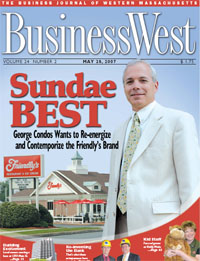
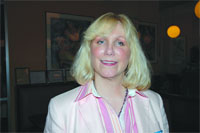

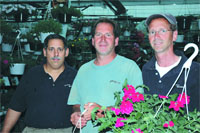

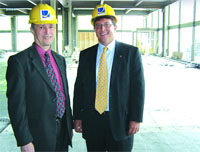

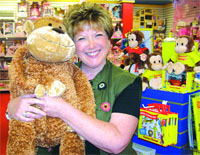

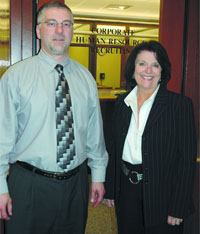

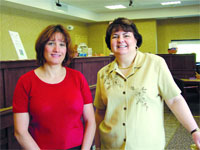

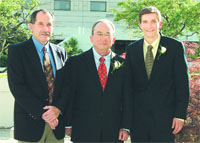

 13:50. That’s the time, in hours and minutes, that Tad Tokarz posted in the first Ironman triathlon he raced in two years ago. That’s how long it took him to complete the 1.5-mile swim, 120-mile bike ride, and 26-mile run. Tokarz remembers his time, but it is of no real significance to him. “My goal was to finish, and I did.”
13:50. That’s the time, in hours and minutes, that Tad Tokarz posted in the first Ironman triathlon he raced in two years ago. That’s how long it took him to complete the 1.5-mile swim, 120-mile bike ride, and 26-mile run. Tokarz remembers his time, but it is of no real significance to him. “My goal was to finish, and I did.”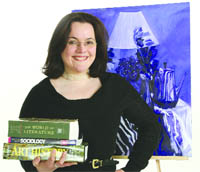 Arlene Rodriguez was born 143 years after Daniel Shays died.
Arlene Rodriguez was born 143 years after Daniel Shays died.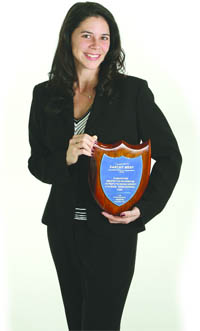 Catherine West recently returned from an intriguing junket to Ireland.
Catherine West recently returned from an intriguing junket to Ireland.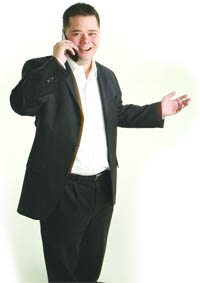 Michael Vann has a few diverse interests.
Michael Vann has a few diverse interests. Dan Touhey was working in marketing for Bayer, specifically on ways to promote Alka-Seltzer Plus Cold Medicine — and, in his words, looking for a way out.
Dan Touhey was working in marketing for Bayer, specifically on ways to promote Alka-Seltzer Plus Cold Medicine — and, in his words, looking for a way out.


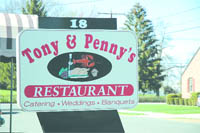
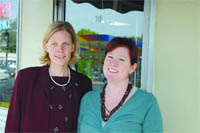

 Ed Zemba has one of those mental to-do lists that people take with them through life, and he’s managed to draw lines through many of the items on it — like scuba diving and skydiving.
Ed Zemba has one of those mental to-do lists that people take with them through life, and he’s managed to draw lines through many of the items on it — like scuba diving and skydiving.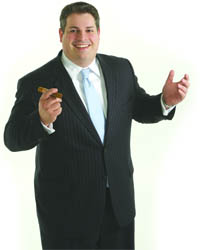 Joseph Pacella has never been at a loss for words. He blames his father.
Joseph Pacella has never been at a loss for words. He blames his father.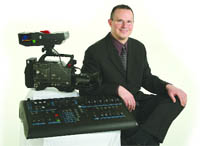 Michael Zaskey’s career began at age 11, when his father brought home a camcorder, and Zaskey immediately dove into the box.
Michael Zaskey’s career began at age 11, when his father brought home a camcorder, and Zaskey immediately dove into the box.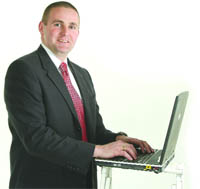 Patrick Leary isn’t one to dip a toe in the water when a diving board is close by.
Patrick Leary isn’t one to dip a toe in the water when a diving board is close by.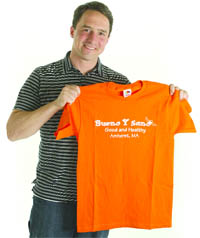 It all started with a late-night stop at a Mexican joint on Nantucket.
It all started with a late-night stop at a Mexican joint on Nantucket. Paul Kozub was captain of the basketball team at Skidmore College.
Paul Kozub was captain of the basketball team at Skidmore College.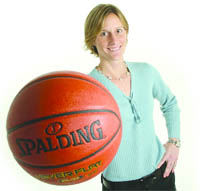 Christy Hedgpeth says she has a sports analogy, or lesson, for almost every occasion, including just about every business situation she finds herself in.
Christy Hedgpeth says she has a sports analogy, or lesson, for almost every occasion, including just about every business situation she finds herself in. Bill Bither says he doesn’t really have anything he’d call “free time,” just time spent doing many different things.
Bill Bither says he doesn’t really have anything he’d call “free time,” just time spent doing many different things.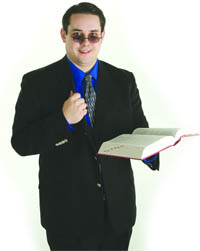 With degrees in Political Science and Law — and experience campaigning for political candidates in Massachusetts — Michael Gove is enthusiastic, to say the least, about politics. Just don’t ask him to run for office.
With degrees in Political Science and Law — and experience campaigning for political candidates in Massachusetts — Michael Gove is enthusiastic, to say the least, about politics. Just don’t ask him to run for office.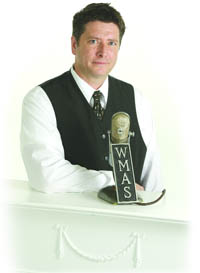 Craig Swimm didn’t see it as a step backward.
Craig Swimm didn’t see it as a step backward. While the rest of New England was slogging through a long, cold winter, Jillian Gould was building a beach.
While the rest of New England was slogging through a long, cold winter, Jillian Gould was building a beach. Jake Giessman has always been a thinker. Now he’s a doer, too.
Jake Giessman has always been a thinker. Now he’s a doer, too.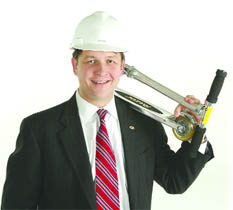 Richard Corder has spent the past few years leading two major construction projects: a $50 million expansion of Cooley Dickinson Hospital — and a tree fort he is building with his 10-year-old son, Harrison.
Richard Corder has spent the past few years leading two major construction projects: a $50 million expansion of Cooley Dickinson Hospital — and a tree fort he is building with his 10-year-old son, Harrison. Faith. That’s what Denise Cogman says moves her forward in life, and is what gives her strength in her position within the Springfield School system, managing close to 3,000 volunteers and enriching the lives of the city’s many students.
Faith. That’s what Denise Cogman says moves her forward in life, and is what gives her strength in her position within the Springfield School system, managing close to 3,000 volunteers and enriching the lives of the city’s many students.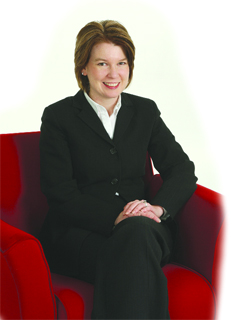 Her maiden name is Liptak, and Amy Caruso has dedicated herself to living up to it.
Her maiden name is Liptak, and Amy Caruso has dedicated herself to living up to it. She calls it the “convertible bra.”
She calls it the “convertible bra.” Dena Hall describes efforts to meet the many demands of her job, while also making time to give back to the community, root on the UMass men’s hockey team (she and her husband, Eric, have season tickets), and walk the couple’s boxer, Crickett, as the quintessential balancing act.
Dena Hall describes efforts to meet the many demands of her job, while also making time to give back to the community, root on the UMass men’s hockey team (she and her husband, Eric, have season tickets), and walk the couple’s boxer, Crickett, as the quintessential balancing act.
